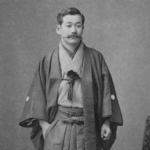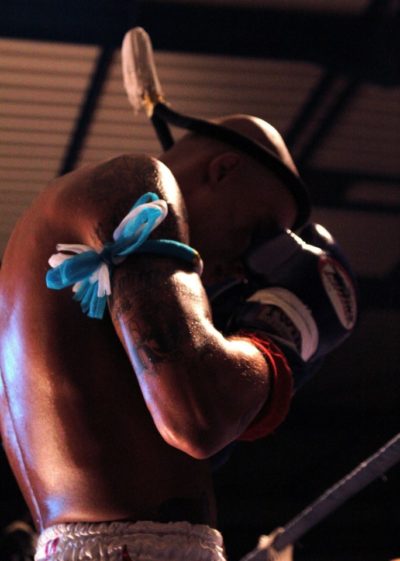MARTIAL ARTS BELTS AND RANKING SYSTEMS: HISTORY AND PURPOSE
Martial arts ranking systems of any type have been and probably always will be a hot topic of discussion within martial arts ranks (pun intended). The discussions essentially boil down to what do ranks mean and the inconsistency of that meaning across arts and even schools.
BELTS

Jigoro Kano Founder of Judo
Belts in martial arts systems came from a ranking system implementation from Dr. Jigoro Kano, founder of Judo in the 1880’s. Before belts, there were only certifications (on paper) of ranks. The belts themselves were originally only white and black in color before more colors were added when Judo practitioners started wearing the gi to train in. The first colors added were brown, ranked before black, a red and white paneled belt and red belt for the top level black belts and these colors sometimes only worn in ceremonial occasions while a black belt still worn for training.
The multi colored belt additions came mainly during the 1970’s through the 1990’s as schools become more common and commercialized as the demand for martial arts from the general public went up. Judgment should not be made on quality of instruction by the adding of multiple colors and commercialization because those factors alone, logically, do not on their own, determine the quality of a practitioner, instructor, or school. The order of colors between white and black are not standardized between arts or even organizations within arts. For instance, some arts hold a blue belt as higher than green while other arts, the opposite is true.
The structure of actual ranking, which is based on a Japanese academic/sport/game ranking kyu/dan system, does seem to be consistent no matter what colors are chosen to represent the different kyu and dan ranks. The Japanese systems have 10 Kru ranks which count in descending order from 10 to 1 followed by Kyu ranks which count ascending from 1 to 10. Dan ranks tend to be the black belt ranks. Many arts from other nations than Japan have adopted the Japanese system and either use kyu and dan or a combination of native words and the Japanese. An example are Korean systems that use geup in place of kyu and still use dan for the black belt ranks. Some Chinese systems use the term duan, being the root word in Chinese characters for the Japanese word dan.
RED BELT CONFUSION
As well as the inconsistency of kyu ranking colors across arts and systems, the red belt can sometimes be a source of confusion for the layman as well as experienced martial artist. Okinawan and Japanese systems as well as Brazilian jiu-jitsu use the red belt as the top dan ranks. Some Korean systems will use the red belt in place of a brown and others will use both red belts and brown belts as the steps just before black.
INCONSISTENCY OF ABILITY MATCHED WITH BELTS
The complexity of martial arts systems and desired brand quality create different levels of ability at belt ranks across arts. This is why we may see a black belt taking just a few years in some arts whereas taking a decade in other arts. This also should not be confused for the concepts of better or worse. Belt ranking, in general, are not an indication of fighting ability per se because fighting ability is a diminishing skill. Just as a championship trophy is a marking of accomplishment for one point in time, a belt is the same when it comes to fighting ability. Once achieving a belt, one’s fighting ability may improve or degrade depending on factors such as age, physical illness/disability/injury, time able to put in maintaining skill. Being that earring a 10th dan takes several decades of training, it is only logical to assume that a 10th dan is not going to perform physically with the same fighting ability as a current UFC champion. It is quite interesting that martial arts are a fighting endeavor that somehow still perpetuates a myth that an instructor, no matter the age, can compete with the top younger fighters. The same is not expected of top boxing coaches or top wrestling coaches: no one expected Cus D’Amato to be able to knock out Mike Tyson or Angelo Dundee to give Muhammed Ali a run for his money.
ANTI-BELT SENTIMENTS AND RANKING

Muay Thai Kickboxer
Bruce Lee, founder of Jeet Kune Do, is attributed to having said that belts are only good for holding up your pants. The character Mister Miyagi in the film “The Karate Kid” also quipped “In Okinawa, belt mean no rope to hold up pants.” There is an attitude among many martial arts circles echoing the same feelings about the uselessness of belts assuming that quotes like these mean that belts or belt systems are useless.
It is rare to find a martial arts school or system that doesn’t have a ranking system of some sort. The non belt ranking systems may be as simple as beginning student, intermediate student, advanced student, and instructor. In the mid 1960’s Bruce Lee had experimented with a ranking system that indicated rank by different colored yin/yang symbols. He eventually abandoned that and went with an ascending number “rank” system.
Other arts may use other colored items such as sashes, ropes, ikats, malongs, sarongs, and t-shirts to designate rank. The WTBA organization of Muay Thai uses colored Pra Jiads, the armband worn by a fighter in Muay Thai, to display rank. The French art of Savate uses a colored glove system to designate rank. The colored gloves are a certification rank and not actually a color of a glove worn.
INSTRUCTOR CERTIFICATION SYSTEMS
Some systems and arts forgo any visible presentation of rank and are just certified at student and instructor levels. Separate instructor certification is a relatively modern thing perhaps with its beginning in the 1970’s and definitely by the 1980’s. The traditional kyu/dan system assumes a 3rd dan is automatically an instructor and no additional instructor certification was needed. As demand and commercialization of martial arts progressed, there was a need for credibility for instructors who may be looking to teach martial arts at sporting clubs and as school programs. For systems that did not have belt certifications, an instructor qualification via certification was a reasonable answer to this issue. Even today we are starting to see instructor or coach certifications in old combat sports such as boxing and wrestling, where evidence of ability was usually just shown in competition.
THE NEED FOR RANKING
Need for ranking is very much an individual decision. Most schools will need some sort of ranking system for a few reasons. One reason would be to divide classes into beginning, intermediate, and advanced levels. Depending on the school, some train all levels together and others will separate. A second reason is to give students a visible, tangible goal to strive for. Every human works slightly different and all have their own personal motivations. Giving tangible steps is a proven way to motivate many. A ranking system with tangible steps is an excellent concrete way to motivate many individuals to continue to come and train.
Even a place where ranking in a belt type sense isn’t applicable, there are still ranking systems. Professional fight sports like boxing, wrestling, MMA, and kickboxing pretty much show the proof of ability right on the mat/in the ring. For a combat athlete, the multi colored belts/ranks aren’t necessarily a help for them to judge how they will do in their given sport. If asked, certainly hundreds of thousands of anecdotal stories of “white belts beating higher belts” can be drawn out on a given social media thread. This doesn’t mean that these fight sports don’t have rankings. There is clearly a champion of each class/division of the sport and there are rankings that designate 1st best, second best, etc. These all change through the actual competition so they are very different from martial arts ranking in that such competition rank can be taken away with a loss.
THE NEGATIVE
For all the good belts/ranking systems do, there is the flip side naturally. Ranking systems, if one doesn’t understand what they really mean, can cause a false sense of ability. This can be for the practitioner themselves or other people who are looking at the person with a rank as invincible or infallible.
Ranking systems can also give rise to cliques within schools, arts, and the martial arts community as a whole. Clique mentality represents the opposite of the type of mentality martial arts tends to promote as a positive: humility. Again, if asked for in a social media thread, there would most likely be hundreds of thousands of anecdotal stories of cliquish behavior from higher ranks toward lower ranks or practitioners of one art to practitioners of other arts. For instance group X and group Y may both be groups of black belts but group X may feel superior to group Y because their black belts are in (insert art here).
The negative side to the tangible goal part of belts/ranking systems is the “finger pointing to the moon” that Bruce Lee spoke of. If black belt is a goal and no deeper meaning is found, one may quit after achieving black belt thinking that one has accomplished the “end” or the “top.” Examine that original kyu/dan rank structure again and it shows 20 steps. A black belt is a first dan rank, which is half way. At what point is anyone half way through an academic endeavor considered an expert?
In the end, it is up to each individual to put their own worth on any rank. Belts/ranks don’t mean the same between each art, each school, or even each individual, nor should they. Martial arts is a yin/yang of personal and group experience. Each individual must train to improve or maintain. Each journey is individual yet experienced with a group as well. The group is needed to experience the individual experience.
